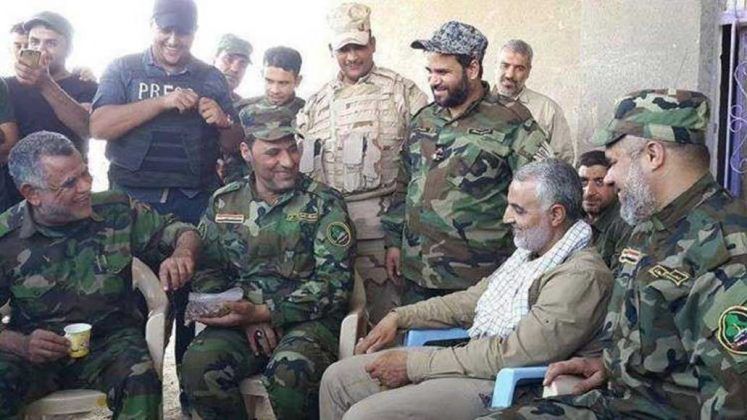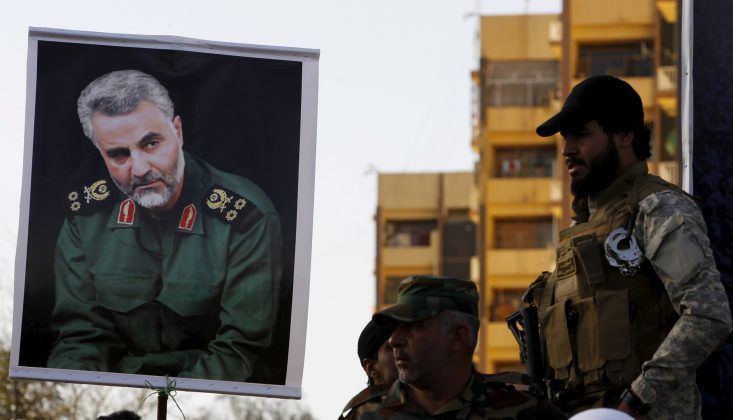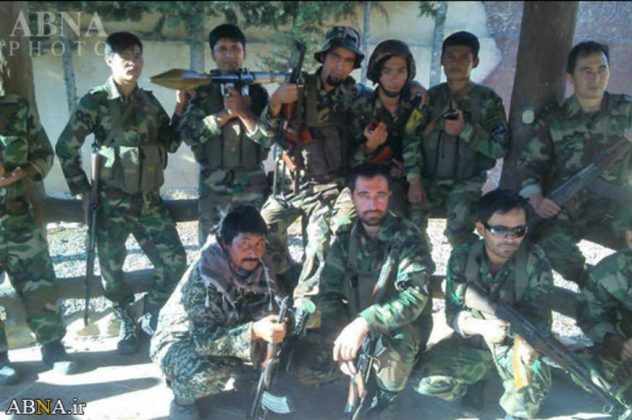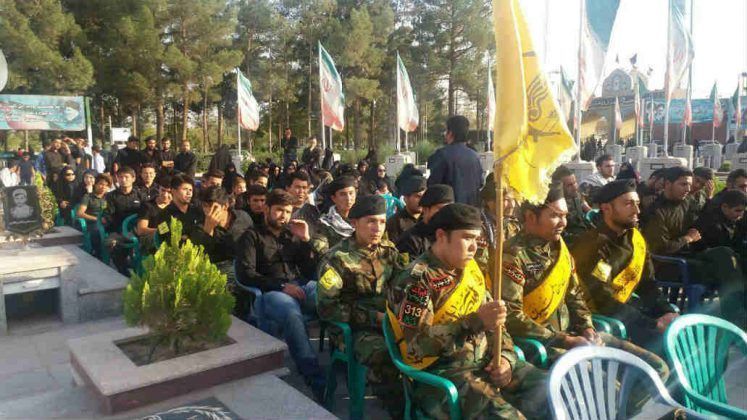By Ahmad Rafat
Iraqi Prime Minister Adil Abdul-Mahdi has given the Popular Mobilization Forces (PMF) one month to either integrate the Iraqi military or lay down its arms and become a political organization.
The PMF, also known as the People’s Mobilization Committee (PMC) and the Popular Mobilization Units (PMU), is an Iraqi state-sponsored organization comprising 40 mostly Shia militia groups. It was created in 2014 as part of a coordinated fight against the so-called Islamic State of Iraq and Levant (ISIS).
Since its creation, the PMF has been operating under the auspices of the Islamic Revolutionary Guards Corps’ Qods Force (IRGC-QF) and its commander Major General Ghasem Soleimani.
In 2017, Muqtada al-Sadr, an Iraqi Shia cleric and the leader of the Shia militia group Saraya al-Salam, called on the PMF to lay down its arms. Although Saraya al-Salam had joined the fight against ISIS under the PMF umbrella, it never aligned itself with the Islamic Republic and Commander Soleimani.
The Council of Representatives of Iraq (Iraqi Parliament) passed a bill in 2016 recognizing the PMF as part of the country’s armed forces. However, the PMF never merged with the Iraqi military and continued to operate under Tehran’s command.
Some news outlets have suggested that the U.S. pressured Mr. Abdul-Mahdi to call on the PMF to either merge with the Iraqi military or lay down its arms. The U.S. recently imposed sanctions on PMF Deputy Chairman Adil Mahdi al-Muhandis.
During a meeting with his Iraqi counterpart, French President Emmanuel Macron also called for the disbanding of the PMF. However, Iraqi President Barham Salih, who held a meeting with Iran’s Supreme Leader Ayatollah Ali Khamenei on June 30 in Tehran, would like to see the PMF remain an armed Shia militia force.
A week before Prime Minister Abdul-Mahdi announced his decision on the PMF, Commander Soleimani held a meeting in Baghdad with the leaders of the core Shia militia groups within the PMF — including Asa’ib Ahl al-Haq (the Khazali Network), the Badr Organization (the Badr Brigades or Badr Corps), and Kata’ib Hezbollah (the Hezbollah Brigades).
The same senior commanders also attended an extensive conference titled “We Share the Same Blood” in Tehran, at the end of which they announced their commitment to stand with the IRGC against any U.S. military attack on Iran. Asa’ib Ahl al-Haq, who is under the command of Qais al-Khazali, has already carried out attacks on Saudi soil and against U.S. interests in Iraq.
“The decision by Prime Minister Abdul-Mahdi to disband the PMF is directly connected to the recent escalation of conflict between the U.S. and Iran,” Baghdad-based journalist Asil Hashemi told Kayhan Life. “Iraq does not want to get dragged into an armed conflict between these two countries. However, it also knows that it cannot remain neutral for various reasons, including its geographical location.”
Hashemi explained: “Some people may find it odd that Iran and some of its allies should support Abdul-Mahdi’s decision regarding the PMF. However, a careful analysis of the situation shows that Commander Soleimani had most likely suggested the idea to the Iraqi prime minister.”
Hashemi added: “An attack on the employees of American oil companies in the city of Basra — as well as two separate Katyusha rocket attacks one into Baghdad’s Green Zone which landed near the U.S. Embassy, and another striking a building in the city of Mosul which housed U.S. military advisors — were warnings issued to Washington by Tehran-backed Shia militias in Iraq.”
“The Iraqi government understands why Abdul-Mahdi made this decision, because it could not be liable for any attacks that PMF may launch against the U.S. interests or those of its allies in the country,” Hashemi noted. “Also, the PMF will enjoy a great deal of immunity were it to assimilate into the Iraqi armed forces. Any retaliatory attack against the PMF by the U.S. military will then have dire consequences for Washington-Baghdad relations. It is not, therefore, surprising that Qais al-Khazali should support Abdul-Mahdi’s decision, and call it ‘a step in the right direction.’”
Hashemi pointed out: “The Islamic Republic has much deeper roots, and greater influence in Iraq than the U.S. Iran is using Iraq to transport arms and equipment to Syria. The U.S. knows this but cannot do anything about it.”
Reports by Western intelligence agencies confirm Hashemi’s claims. The Iranian military shipped dozens of rockets to Syria through the Al Bukmal border crossing. The Islamic Republic has reportedly built a corridor in this border region through which it moves arms, ammunition, equipment, and personnel. The Iraqi and Syrian governments do not control nor monitor these regions.
Iraqi militias are not the only forces which could act as Iran’s proxies if tensions between Washing and Tehran were to escalate into an armed conflict. Iranian-backed Houthi rebels in Yemen will most likely play a crucial role if war breaks out between the U.S. and Iran. The Islamic Republic has been providing financial and military support to the Houthis for years. Iran will use the Houthis to attack military ships in the Strait of Hormoz and Saudi Arabia if war breaks out.
Iran could also mobilize Hamas and Islamic Jihad, which have been operating in the Gaza Strip for years. They could launch attacks against Israel should Tehran and Washington’s war of words end in a military clash. Hamas is not Iran’s proxy to the same extent as the PMF, and although Tehran has been providing political and financial support to the group, the Emir of Qatar Sheikh Tamim bin Hamad Al Thani is the group’s primary sponsor. Not having a role in the administration of the Palestinian National Authority could provide Hamas greater freedom to carry out armed attacks against various targets. Bahrain’s main Shia militia groups al-Ashtar Brigades and Saraya al Mokhtar also work closely with the IRGC-QF.
The main military arm of the Islamic Republic in the Middle East is, without a doubt, the Lebanese Hezbollah, which came into existence in 1985 following a meeting in the Damascus office of the Iranian Ambassador to Syria Ali Akbar Mohtashamipur. Hezbollah regards Ayatollah Ali Khamenei as its spiritual leader and has pledged its unwavering loyalty to the Islamic Republic.
“The U.S. should know that a war in the region will not be confined within Iranian borders,” Hassan Nasrallah, the Secretary-General of Hezbollah said recently. “The entire region will go up in flames. The Islamic Republic has given enough guided missiles to Hezbollah to reshape the region.”
Besides the IRGC advisors and the Holy Shrines Defenders, Iran has also deployed the Shia Afghan Fatemiyoun Division (Liwa Fatemiyoun) and the Pakistani Shia Zainab Brigades (Liwa Zainabiyoon). Before their deployment to Syria, these combat units receive military training at the IRGC bases in Tehran and Qom.
Hezbollah units train the Syrian loyalist Shia Baqir Brigade. The Baqir Brigade is, in fact, the Syrian branch of the Lebanese Hezbollah. Much like Hamas and Hezbollah, the Baqir Brigade comprises a military force and a political organization. Its political wing took part in the 2016 Syrian elections and even won a seat in the parliament.
The Islamic Republic is reportedly trying to expand its political and military influence in other parts of the world besides the Middle East.
“Iran is setting up a network of terror cells in Africa to attack the U.S. and other Western targets in retaliation for Washington’s decision to impose sanctions against Tehran,” The Telegraph reported on June 24, citing unnamed Western security officials. “The Iranian cells are said to be active in several African countries, including Sudan, Chad, Ghana, Niger, Gambia, and the Central African Republic.”
The paper added: “The operation is being organized by Unit 400, a highly specialized section of the Qods Force which is run by Hamed Abdollahi, a veteran IRGC commander who was designated by the U.S. as supporting terrorist activity in 2012. Details of the terror cell’s existence were uncovered following a series of arrests in Chad in April.”
Western security agencies are very concerned about the creation of terror networks in Africa. The unstable political situations and the lack of reliable and practical intelligence and security systems in many African countries could provide an ideal environment for Iran to wage its proxy wars against the U.S. and its allies.
A European security source told Kayhan Life: “As worrying as a conventional armed conflict with the Islamic Republic in the region is, we are more concerned about a global terrorist operation on a massive scale that could target our interests anywhere around the world. The Islamic Republic does not have strong conventional ground, air, and sea capabilities to fight against a superpower such as the U.S. or even some countries in the region. However, it can unleash its mad dogs to attack us.”
[Translated from Persian by Fardine Hamidi]
| [amo_member id=”110709″ item-width=”250″ align=”left” item-margin=”20″ full-width=”yes” panel=”right”] |







